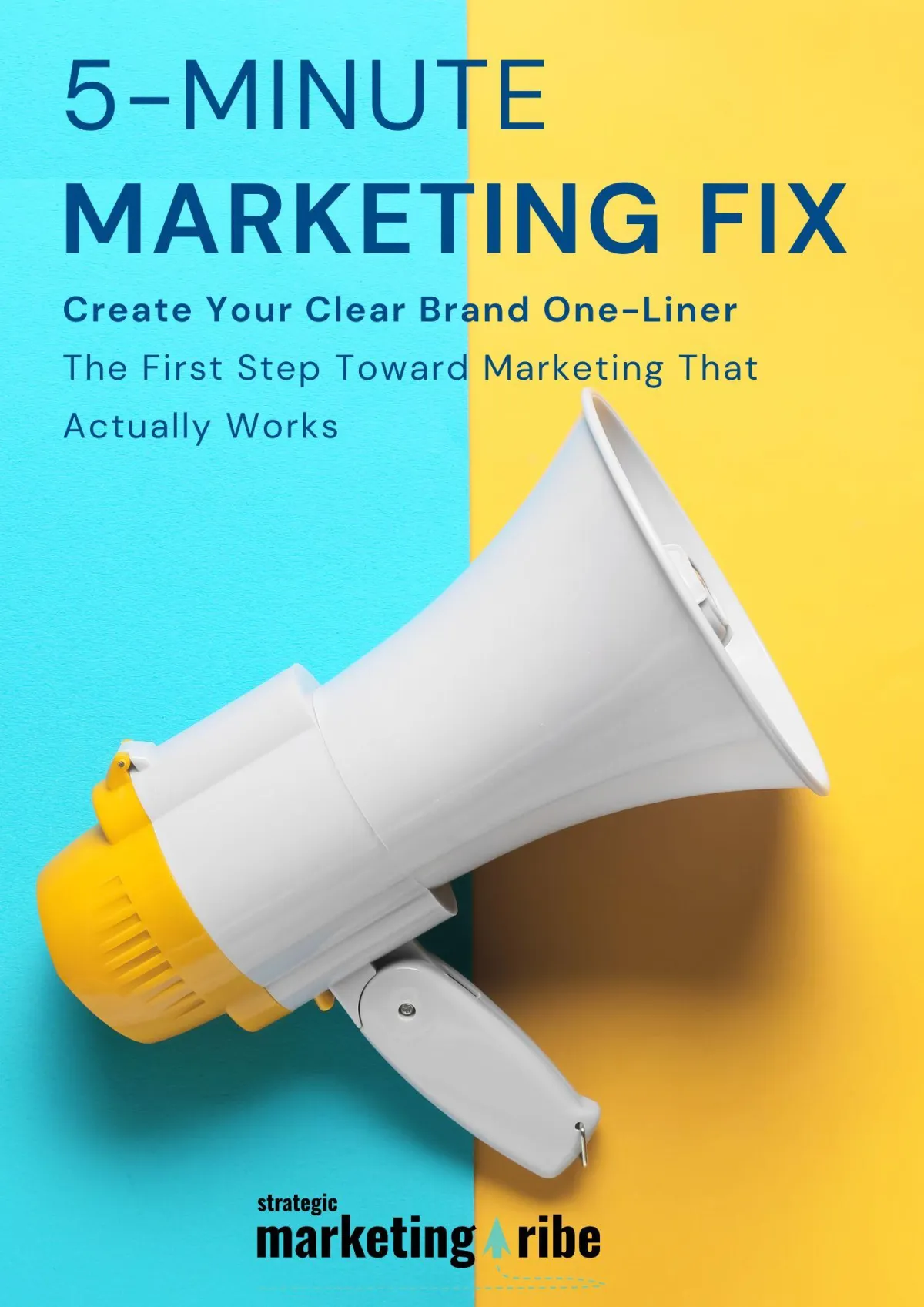STORY, MEET STRATEGY
Let’s make marketing feel less robotic and more real.
Find resources that bring your message—and your business—to life.

AI Strategy Risks: What Executives Keep Missing
By Vicky Sidler | Published 22 August 2025 at 12:00 GMT+2
In boardrooms everywhere, executives are rushing to “embrace AI.” Translation: automate tasks, cut headcount, and tell investors they’re “innovating.”
The problem? Many of them don’t actually understand what they’re implementing—or the risks they’re taking on.
Recent commentary from Markus Brinsa, CEO of SEIKOURI Inc., makes one thing clear: too many leaders are confident about AI without having a clue how it works. They’re deploying it in high-stakes areas like healthcare, hiring, and education with no audits, no bias testing, and no real governance.
When the lawsuits come—and they will—it won’t be the AI in the dock. It’ll be the executives who signed off.
TL;DR
Leaders are rolling out AI without understanding training data, compliance, or risks
Past failures (IBM Watson, Babylon Health) show high-stakes AI can go dangerously wrong
Blind trust in vendors and consultants is a liability, not a shortcut
Good AI leadership means slowing down, auditing, and asking uncomfortable questions
Need help getting your message right? Download the 5-Minute Marketing Fix.
Table of Contents
AI Strategy Risks: What Executives Keep Missing
Why This Matters for Small Business Owners Too:
Lessons From AI’s Public Faceplants:
How to Avoid Becoming the Next Headline:
2. Demand Vendor Transparency:
Your AI Decisions Are Marketing Decisions:
AI Can't Replace Expertise—Tea Data Breach Proves It
AI Fraud Crisis Warning—What Small Biz Must Do Now
Short-Form Video Is Winning—Here's How to Keep Up
Sydney Sweeney's American Eagle Ad Backlash—Lessons for Small Businesses
AI Visibility: What ChatGPT, Google AI, and Perplexity Cite Most
FAQs on AI Strategy Risks for Business
What’s the biggest risk with current AI strategies?
Is this only a concern for big companies?
What does it mean to “audit” an AI tool?
How do I know if my AI vendor is trustworthy?
Why is it risky to fully outsource AI decisions?
What should I do before launching AI in my business?
How does this tie into marketing?
Can AI still be helpful if I take these precautions?
How can I make sure my business messaging is strong before using AI?
The Illusion of Competence:
Talk to enough executives and you’ll hear the same pattern: they’ve chatted with ChatGPT, hired an AI consultant, and now feel “AI ready.”
Except they’re not.
Understanding how to use AI isn’t the same as understanding what it’s doing behind the scenes—or what happens when it fails. In healthcare, that can mean bad triage decisions. In recruitment, it can mean biased candidate screening. In education, it can mean inaccurate tutoring advice.
And once that harm happens? You can’t blame the algorithm. It’s your name on the paperwork.
Why This Matters for Small Business Owners Too:
This isn’t just a “big corporation” problem. Smaller companies can be just as vulnerable—sometimes more so—because they lack internal compliance teams or technical oversight.
When you outsource decision-making to a tool you don’t fully understand, you’re effectively betting your brand on a black box.
That’s not strategy. That’s gambling.
Lessons From AI’s Public Faceplants:
Markus Brinsa’s examples read like a cautionary tale list:
IBM Watson Health: Promised to revolutionize medicine. Ended up recommending unsafe treatments.
Babylon Health: Claimed its chatbot could diagnose like a doctor. Missed serious conditions. Collapsed.
Workday: Facing a class-action suit over alleged hiring discrimination by its AI recruiting tool.
Each story followed the same script: big promises, rushed rollouts, ignored warnings. Then the fallout.
How to Avoid Becoming the Next Headline:
If you’re considering AI in your business—whether for customer service, marketing, hiring, or analytics—here’s how to avoid joining the failure list:
1. Audit Before You Deploy:
Understand the training data, test for bias, and map potential failure points.
2. Demand Vendor Transparency:
Ask for explainability, bias reports, and liability clauses. If they can’t provide them, walk away.
3. Start Small, Then Scale:
Run pilots. Document results. Identify unintended consequences early.
4. Share Accountability:
Make sure contracts clearly define who’s responsible when AI outputs cause harm.
5. Train Your Team:
Don’t just train the AI—train the humans who use it.
Your AI Decisions Are Marketing Decisions:
Every AI decision impacts your brand. Customers don’t separate “your service” from “your tech”—to them, it’s all you.
And sometimes, AI gets it wrong in ways you don’t expect. I’ve experienced this firsthand—not in business, but with my dog. She’s had ongoing health issues, and like any concerned pet owner, I turned to AI to help me understand her symptoms. One day, it confidently told me she might have a serious, urgent problem, so I rushed her to the vet. After a quick check, the vet reassured me it wasn’t a big deal. In fact, I’m pretty sure they now think I’m a hypochondriac—at least when it comes to my dog.
In my case, I overreacted to something minor. But what worries me far more is the reverse scenario—AI downplaying something serious, leading me to underreact. That’s why I now send the vet a quick WhatsApp message before making any decisions. It’s faster, it’s accurate, and it puts the decision in the hands of someone accountable.
That’s exactly the point with AI in business: you need trusted, accountable humans in the loop before acting on AI-generated advice. When the stakes are high—whether it’s a customer’s medical care, a hiring decision, or your own brand reputation—you can’t afford to take AI’s word as the final word.
If your AI makes a mistake, you own it. That means your public messaging, crisis response, and trust-building strategy need to be ready before you roll out the tech.
And that starts with clarity—not hype.
Start With a Clear Message:
Before you automate anything, make sure you can explain—clearly—what you do, who you help, and why you’re different. That clarity builds trust, sets expectations, and makes it easier to integrate AI in a way that supports your brand rather than undermines it.
Need help getting that clarity?
👉 Download the 5-Minute Marketing Fix — it’s a free tool to help you nail your one-liner, so your business stays trusted, even in a noisy, AI-powered world.
Related Articles
AI Can't Replace Expertise—Tea Data Breach Proves It
Tea’s dating app executives thought they could shortcut security. Instead, 72,000 user photos—including IDs—were leaked. A sharp reminder that skipping human expertise for AI or “move fast” thinking can end in public disaster.
AI Fraud Crisis Warning—What Small Biz Must Do Now
When Sam Altman says AI fraud is “impending,” it’s worth paying attention. This piece explores how bad actors can outpace unprepared businesses—perfect context for why blind AI adoption is so risky.
Short-Form Video Is Winning—Here's How to Keep Up
Attention spans are now just 40 seconds. If you can’t explain AI risks quickly and clearly, your audience will scroll past. This article offers a playbook for getting to the point fast.
Sydney Sweeney's American Eagle Ad Backlash—Lessons for Small Businesses
American Eagle’s high-profile ad misstep shows what happens when oversight fails in marketing. A different industry, same lesson: lack of review and critical thinking can derail a campaign—or an AI rollout.
AI Visibility: What ChatGPT, Google AI, and Perplexity Cite Most
While many leaders don’t understand the AI they deploy, this guide shows how to understand—and influence—what AI tools actually see and repeat. The flip side of risk is opportunity.
FAQs on AI Strategy Risks for Business
What’s the biggest risk with current AI strategies?
Executives are rolling out AI systems without understanding how they work, what data they’re trained on, or what happens when they fail. That lack of oversight creates legal, ethical, and brand risks—especially in high-stakes areas like healthcare, hiring, or education.
Is this only a concern for big companies?
Not at all. Small businesses can be even more vulnerable because they often lack compliance teams or technical oversight. If you’re using AI to make decisions without understanding it, you’re still responsible when it goes wrong.
What does it mean to “audit” an AI tool?
It means looking under the hood before you use it. That includes checking for bias, understanding where the training data came from, identifying where the tool might fail, and documenting how decisions are made.
How do I know if my AI vendor is trustworthy?
Ask for documentation. That includes explainability reports, bias testing results, and clear terms on who is liable if something goes wrong. If they dodge those questions, find a different partner.
Why is it risky to fully outsource AI decisions?
Because your customers don’t see the difference between “you” and “your tool.” If the AI messes up, it’s your brand on the line. Outsourcing decision-making to a black box is not strategy—it’s gambling.
What should I do before launching AI in my business?
Start small. Run a pilot, measure real outcomes, train your team properly, and map out possible risks. Then scale. Don't roll out anything critical until you’ve done that work.
How does this tie into marketing?
Every tech decision affects your customer experience—and your brand. AI is now part of your messaging, your trust-building, and your crisis response. If it fails, people won’t blame the algorithm. They’ll blame you.
Can AI still be helpful if I take these precautions?
Yes. AI can absolutely support your business, but only when it’s used intentionally. The goal is not to eliminate humans—it’s to empower them with the right tools, the right training, and the right message.
How can I make sure my business messaging is strong before using AI?
Start with your one-liner. If you can’t explain what you do and why it matters in one sentence, AI will just confuse people faster. Download the 5-Minute Marketing Fix. It’s free, and it helps you clarify your message before adding any new tool to the mix.

Created with clarity (and coffee)






